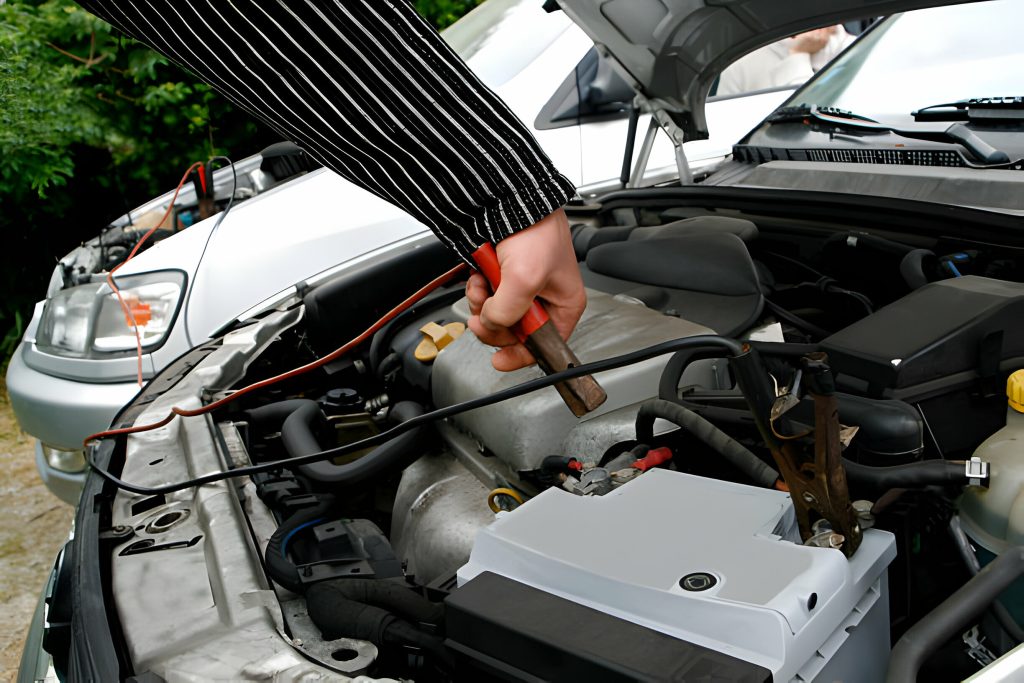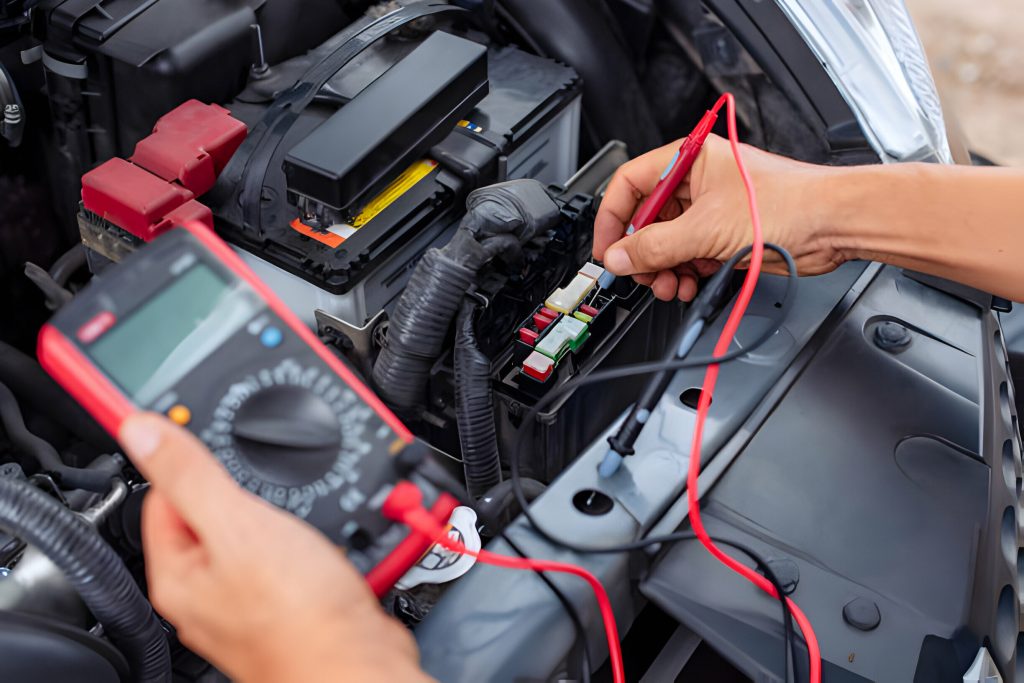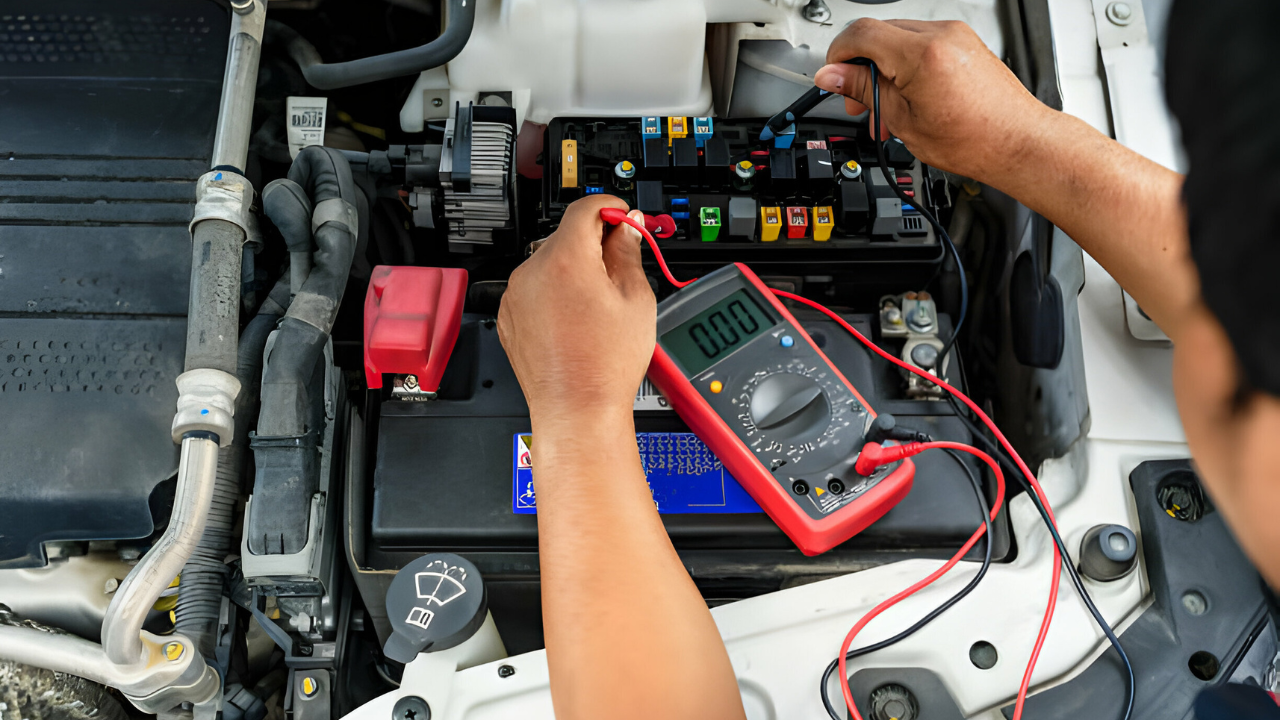A car battery needs around 12.6 volts to start. A car battery is the lifeline of a vehicle, providing the necessary power to start the engine and operate the various electrical systems.
The voltage required to start a car usually falls within the range of 12. 6 to 12. 8 volts. This voltage is necessary to activate the starter motor and ignite the fuel to power the engine. Understanding the voltage requirements of a car battery is crucial for maintaining its optimal performance and ensuring the smooth functioning of the vehicle.
We will delve deeper into the importance of the correct voltage for a car battery and how it impacts the vehicle’s overall functionality.
What Is The Recommended Voltage For Starting A Car?
What is the Recommended Voltage for Starting a Car?
The Ideal Voltage Range
The ideal voltage range for starting a car is typically between 12.4 to 12.6 volts. Below this range, the battery may not have enough power to start the engine. Higher voltage could also lead to damage to the vehicle’s electrical system.
Understanding Cold Cranking Amps (CCA)
Cold Cranking Amps (CCA) measure a battery’s ability to start your car in cold temperatures. The higher the CCA, the better the battery will perform in cold weather. For example, a battery with 600 CCA can start a car in colder weather than one with 400 CCA.
The Impact Of Temperature On Voltage
Temperature plays a vital role in the voltage required to start a car. Cold weather can reduce a battery’s capacity, making it harder to start the vehicle. In contrast, warmer temperatures tend to boost a battery’s performance.
How Do Car Batteries Provide Power?
In this section, we will explore how car batteries provide power and the key factors that contribute to their functionality, including chemical reactions, lead-acid batteries, and the role of alternators in maintaining voltage.
Chemical Reactions Within The Battery
The process of providing power begins with the chemical reactions within the car battery. When the battery is discharged, lead sulfate is formed on the battery plates, and when recharged, this lead sulfate is converted into lead oxide and sulfuric acid.
Usage Of Lead-acid Batteries
Car batteries predominantly utilize lead-acid technology, a decades-long staple in the automotive industry. Lead-acid batteries’ robust and reliable nature makes them well-suited for starting a vehicle and providing power to electrical systems.
The Role Of Alternators In Maintaining Voltage
Once the car is running, the alternator takes over the task of maintaining voltage and recharging the battery. It generates recharging through electromagnetic induction, ensuring the battery remains charged and ready to start the vehicle when needed.

Effects Of Low Battery Voltage On Starting A Car
Car batteries typically require a minimum of 12 volts to start the car. However, if the battery voltage drops below 9. 6 volts, it may struggle to initiate the starting process, causing difficulties for the car to start.
Signs Of Low Battery Voltage
There are several telltale signs that indicate your car battery may have low voltage. It’s important to be aware of these signs so you can take action before it becomes a bigger problem. Here are some common signs to watch out for:
- The engine cranks slowly or struggles to start
- The headlights appear dim or flicker when the engine is running
- The horn sounds weak or does not work at all
- Electrical components, such as power windows or radios, operate sluggishly
- The battery warning light illuminates the dashboard
Consequences Of Trying To Start A Car With Low Voltage
Attempting to start a car with low battery voltage can have several negative consequences. Understanding these consequences is crucial to your vehicle. Here are the potential consequences:
- The starter motor may not have enough power to turn the engine over effectively
- Continuous attempts to start the car can put additional strain on the starter motor and may lead to its premature failure
- The fuel injectors may not receive sufficient power to operate properly, resulting in poor engine performance
- The ignition system may fail to generate enough spark, causing misfires and difficulty in starting the engine
- The alternator may work harder to recharge the battery, potentially shrinking its lifespan.
Takeaways
- Low battery voltage can be identified through signs such as slow cranking, dim headlights, and a weak horn.
- Attempting to start a car with low voltage can damage the starter motor, fuel injectors, ignition system, and alternator.
- It’s crucial to address low battery voltage promptly to avoid further complications and potential costly repairs.
- Regular battery maintenance, including checking the voltage and keeping the terminals clean, can help prevent low voltage issues.
Tips For Maintaining Optimal Car Battery Voltage
Maintaining optimal car battery voltage is crucial for ensuring a reliable and long-lasting battery life. Regular battery maintenance, understanding proper charging techniques, and using voltage monitors are critical factors in achieving this. This section will discuss theses for maintaining optimal car battery voltage.
Regular Battery Maintenance
Regular battery maintenance plays a vital role in keeping the car battery voltage at an optimal level. Here are some easy yet effective maintenance tasks to consider:
- Ensure the battery terminals are clean and free from corrosion buildup by gently scrubbing them with baking soda and water.
- Tighten the battery connections to prevent any loose connections that may hinder the flow of electricity.
- Monitor the electrolyte levels of your battery, if applicable, and top up with distilled water if needed. However, some modern batteries are maintenance-free.
- Inspect the battery case for cracks or damage that may affect its performance or lead to acid leakage.
Proper Charging Techniques
Proper charging techniques are essential to maintain optimal car battery voltage and extend lifespan. Consider these tips for charging your car battery:
- Use an intelligent battery charger that automatically adjusts the charging rate and prevents overcharging.
- Charge the battery slowly and steadily to avoid overheating, which can damage the battery.
- Avoid jumpstarting your car frequently, as it puts additional strain on the battery.
- If you plan to store your vehicle for an extended period, consider using a battery maintainer to keep the voltage stable and prevent self-discharge.
Using Voltage Monitors
Voltage monitors are valuable tools in maintaining optimal car battery voltage. They allow you to monitor the voltage levels and take necessary action if the voltage drops significantly. Here are some tips for using voltage monitors:
- Invest in a voltage monitor that provides accurate readings.
- Regularly check the readings to ensure the voltage remains within the recommended range.
- If you notice a significant voltage drop, consider charging the battery or seeking professional assistance.
- Keep the voltage monitor connected while driving to monitor fluctuations and identify any potential issues.
By following these tips for maintaining optimal car battery voltage, you can ensure that your car starts reliably and prolongs the life of your battery. Remember, regular maintenance, proper charging techniques, and utilizing voltage monitors are essential in keeping your battery in top condition.

Credit: pubs.acs.org
How many volts does a truck battery need to start
Most truck batteries typically operate at a voltage of 12 volts. This is the standard voltage for automotive batteries, including those used in trucks, to start the engine and power the vehicle’s electrical systems. If you are referring to a specific type of truck or battery, it’s always a good idea to check the manufacturer’s specifications for the accurate voltage requirement.
How many volts does a car battery need to start after
A typical car battery needs around 12 volts to start the engine. This is the standard voltage for automotive batteries. However, it’s important to note that while the nominal voltage is 12 volts, the actual voltage of a fully charged battery can be slightly higher, often around 12.6 to 12.8 volts. If the voltage drops significantly below this range, the battery may not have enough power to start the car. Regular maintenance and monitoring of the battery’s voltage can help ensure proper functionality.
How many volts is a car battery when fully charged
A fully charged car battery typically measures around 12.6 volts. However, the actual voltage can vary slightly depending on factors such as the type of battery and its temperature. Remember that while the voltage provides a general indication of the battery’s charge, it’s also important to consider other factors, such as the battery’s capacity and health, for a more comprehensive assessment.
How many volts needed to jumpstart a car
When jumpstarting a car, a common practice involves using a second vehicle’s battery to provide a boost. The voltage from the donor vehicle’s battery is typically around 12 volts. The process temporarily increases the voltage in the dead battery, allowing the starter motor to turn over the engine.
It’s important to note that the actual voltage during the jumpstart may vary based on the condition of the batteries and the charging system. However, a standard automotive electrical system operates at around 12 volts.
How many volts should a car battery have
A fully charged car battery should have a voltage reading of around 12.6 volts. Remember that the specific voltage can vary slightly based on the battery’s temperature and type. If the voltage is significantly lower, it may indicate a partially discharged or depleted battery, and if it’s higher, it might suggest an overcharged condition. Regularly checking the voltage is an excellent way to monitor the health of a car battery.

Frequently Asked Questions On How Many Volts Does A Car Battery Need To Start
What Are The Volts Required To Start A Car?
The recommended voltage to start a car battery is typically around 12 volts. However, it’s important to note that the actual voltage required may vary depending on factors such as the type and condition of the battery, the temperature, and the engine size.
Can A Car Start With A Low Battery Voltage?
A car may struggle to start if the battery voltage is low. It’s best to ensure the battery has a sufficient charge to provide the necessary power for starting the engine. If the voltage is too low, it may be a sign of a weak or failing battery that may need to be replaced.
How Often Should I Check My Car’s Battery Voltage?
It’s a good idea to regularly check your car’s battery voltage, especially before long trips or during extreme weather conditions. Checking a couple of times a year, or whenever you notice any issues with starting the car, can help prevent unexpected breakdowns and ensure your battery is in good working condition.
Is 11.9 volts enough to start a car?
Yes, 11.9 volts is generally considered insufficient to start a car reliably. A fully charged car battery typically measures around 12.6 volts. Starting a car usually requires a battery voltage of at least 11.0 to 11.5 volts for optimal performance. If the voltage drops below this range, it may struggle to start or fail.
What battery voltage is too low to start a car?
A battery voltage below 11.0 to 11.5 volts is generally considered too low to start a car reliably.
At what voltage is a car battery dead?
A car battery is typically considered dead or completely discharged when its voltage drops below 10.5 volts.
Is 10V low for a car battery?
Yes, 10 volts is considered low for a car battery, indicating a significant discharge.
Conclusion
Understanding the voltage required to start a car battery is crucial for maintaining a smooth and efficient driving experience. By ensuring the battery receives the correct voltage, you can prevent issues such as starting difficulties and potential damage to other electrical components in your vehicle.
Remember to check your battery voltage regularly, and if necessary, seek professional assistance to ensure your car starts reliably every time you turn the key. Following these guidelines can keep your car running smoothly and avoid unnecessary breakdowns.

I am Nishadujjaman.I have two years of experience all types of battery like tesla battery,car battery etc. So I work on solving these issues and give various tips on these issues.
